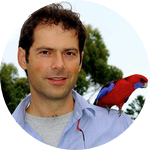About This Project
Traditional stone walls in Greece host high densities of lizards that look and perform differently from lizards living in undeveloped habitats. In collaboration with National Geographic, I will manipulate small islets in the Greek Archipelago in a first-of-its-kind long-term experiment to test whether walls cause these changes in lizards and whether these trait changes have effects on insects and plants in the ecosystem.Ask the Scientists
Join The DiscussionWhat is the context of this research?
Humans are rapidly changing ecosystems globally. Although many of these changes - such as deforestation, overfishing, and invasive species introductions - disrupt and erode ecological communities, some human impacts can bolster local flora and fauna (e.g., Donihue et al. 2013). In order to survive in changing circumstances, plants and animals must adapt to their shifting context, and indeed, some of the fastest recorded rates of evolution occur due to humans (Palumbi et al. 2001, Hendry et al. 2008). As plant and animal species adapt, they may initiate rippling effects through food webs that could lead to changes in ecological processes and environmental services.
I intend to experimentally explore these possibilities across islands in the Greek Archipelago.
Humans have lived in the Greek island landscape for thousands of years. Over this time, the inhabitants grazed goats, built walls, and introduced myriad species to the islands. The native species that remain have had to adapt to their human cohabitants. Lizards, for example, are negatively affected by the loss of vegetation from intensive goat grazing and by predation from cats brought as pets by humans. However, not all human changes have been negative. Lizard populations are concentrated on stone walls that provide refugia, fine thermal gradients, and denser insect populations. If lizards are adapting to life on these walls, as my preliminary data suggest, theory predicts that some of those adaptations could have cascading effects on other species and processes in the ecosystem (Schmitz 2010). I propose to first test whether lizards are indeed adapting to human influence, and second, to assess the effects any adaptations might have on the ecosystem as a whole.
What is the significance of this project?
In the face of rapid global change, ecologists are being called to make predictions about the fate of ecological communities. Species that can adapt may be more resilient than previously acknowledged, but many questions remain before we can make these predictions. Specifically, my research addresses several fundamental questions in ecology, evolution, and conservation biology in the Greek Archipelago:
1) Can species adapt to human land use?
2) If so, how quickly?
3) What traits tend to change and what traits facilitate change?
4) Are these adaptations predictable?
Answering these questions will provide valuable insight for ecology, evolution, and conservation.
What are the goals of the project?
With funding from backers on experiment.com, I will:
1) Initiate the described island manipulation to directly test whether traditional human land use causes behavioral and morphological adaptations in P. erhardii.
2) Monitor this experiment for no less than three years.
3) Update backers on the progress and findings of my research.
4) Submit findings to peer-reviewed journals for publication.
Budget
We made the first goal! Now it's time to STRETCH to $5,000. Read more here for how I hope to use these funds and why I need your help!
$115 will buy additional insect traps that I can deploy via kayak to all of the potential islets.
$1,000 added to the originally budgeted costs for rock transportation will enable a helicopter hire, converting a week's worth of rock-hauling into more time for science!
$500 will hire the originally budgeted wall builders for additional days of supervision and work.
----------------------------------------------------------------------------------------------------
The bulk of these funds will go towards pallets of rocks used for building experimental stone walls. Each pallet is estimated to cost $200, and I need 10. Additionally, I will use $500 to hire two local wall-builders to supervise and ensure my experimental walls mirror traditionally-used stone walls.
Visual Implant Elastomer (VIE) tags will be used to individually mark each lizard before introduction to experimental islets. A kit with injectors, elastomer, and all additional peripherals costs $535.
Additional tools needed for the research include field equipment and supplies (digital calipers, spring scale, etc.: $350).
Endorsed by
Meet the Team
Team Bio
My fascination with ecology started at a young age on family nature walks through the Maine woods. Since then, I've worked on four continents asking questions about how humans can better mesh with nature. My research has had me dodging elephants in the savannas of Kenya and climbing the tallest trees of the Ecuadorian Amazon, and now has me chasing lizards in the Greek Archipelago.I am also an avid nature photographer and enjoy hiking and kayaking, particularly in Maine.
Press and Media
Sage Magazine Photo Essay: "Explorations: Aegean Islands" by Colin Donihue
Yale School of Forestry and Environmental Studies News: " Traditional ranching practices enhance African savanna"
Rewards
$1: Access to experiment.com LabNotes and all blog and email updates this summer.
$30: A personal postcard update from the field, mailed from Naxos, Greece.
$100: Adopt a lizard: name an individually marked experimental lizard, and I'll send pictures and updates on how it's doing throughout the experiment.
$1000: If you can find your way to Greece, I'll give you an in-depth natural history tour of the islands. We'll catch lizards, go sea kayaking to see these experiments, and hike to panoramic views of the Cyclades.
Support from


Additional Information
Relevant Publications
- Donihue, C.M., Foufopoulos, J., Riginos, C., Porensky L., Pringle, R.M. 2013. Glade cascades: Indirect legacy effects of pastoralism enhance the abundance and spatial structuring of arboreal fauna. Ecology 94(4) 827-837.
- Brock K.M., C.M. Donihue, P. Pafilis. 2014. Novel records of frugivory and ovophagy in Podarcis lizards from East Mediterranean Islands. North West Journal of Zoology 10(1) 223-225.
- Sagonas, K., P. Pafilis, P. Lymberakis, C.M. Donihue, A. Herrel, E. D. Valakos. In Press. Insularity affects head morphology, bite force and diet in a Mediterranean lizard. Biological Journal of the Linnean Society.
Citations:
- Donihue et al. 2013. Glade cascades: Indirect legacy effects of pastoralism enhance the abundance and spatial structuring of arboreal fauna. Ecology 94: 827-837.
- Hendry et al. 2008. Human influences on rates of phenotypic change in wild animal populations. Molecular Ecology 17: 20-29.
- Palumbi et al. 2001. Humans as the world's greatest evolutionary force. Science 293: 1786-1790.
- Schmitz. 2010. Resolving Ecosystem Complexity. Princeton University Press, Princeton, NJ.
Project Backers
- 65Backers
- 147%Funded
- $5,000Total Donations
- $76.92Average Donation



